Technical specifications: as listed by EK.
Technical details:
Material:
– Copper fins
– 90% copper tubing (H90)
– Brass chambers
– Aluminum/Steel housing
Dimensions: 180 x 145 x 45mm (L x W x H)
Weight: 0.75kg
Liquid Capacity: ~200mL
FPI: 16
Port threads: 2x G1/4
Fan compatibility: any standard size 140x140x25mm fan; UNC 6-32 thread tapping
Pressure tested: 1bar(g)
The following technical drawings of the CE 140 are courtesy of EKWB.
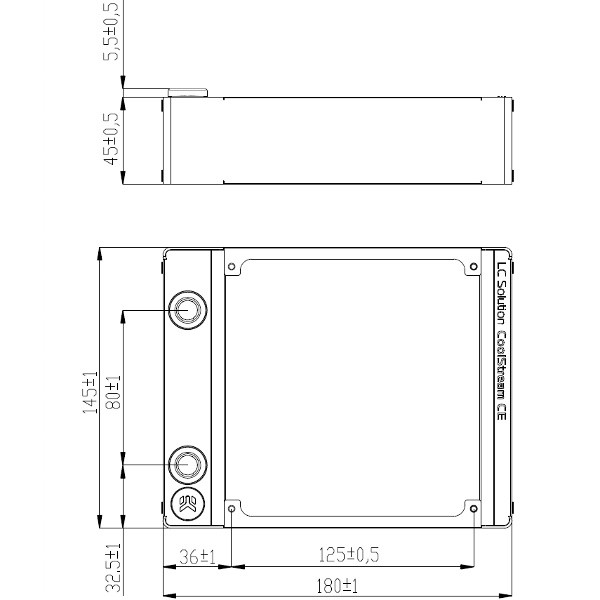
Note the top image has the extra 5.5mm (+/- .05) section which is the amount the port extenders sit proud of the casing. On the review sample this measured 5.3mm.
Dimensions Measured on the Radiator Tested:
 The core is made up of 2 rows of 15 tubes arranged in the standard U-Flow configuration. The fin arrangement consists of single, non louvered fins with a 16 FPI count. This medium thickness, medium density core will likely prove to be a combination capable of good performance with medium speed fans.
The core is made up of 2 rows of 15 tubes arranged in the standard U-Flow configuration. The fin arrangement consists of single, non louvered fins with a 16 FPI count. This medium thickness, medium density core will likely prove to be a combination capable of good performance with medium speed fans.
The following picture is a reference which shows a typical U-Flow coolant flow path, where the coolant travels up all the tubes on one side (left in pic) of the rad and then returns down the other side. U-Flow is most easily recognized when the port end has 2 separate tanks, unlike the CE 140 which the tanks fully enclosed in the external casing.
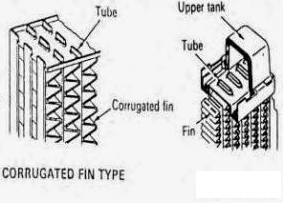
The single non louvered fins are spaced rather unevenly between the tubes and our sample had a fin count spread of 14 FPI to 18 FPI.
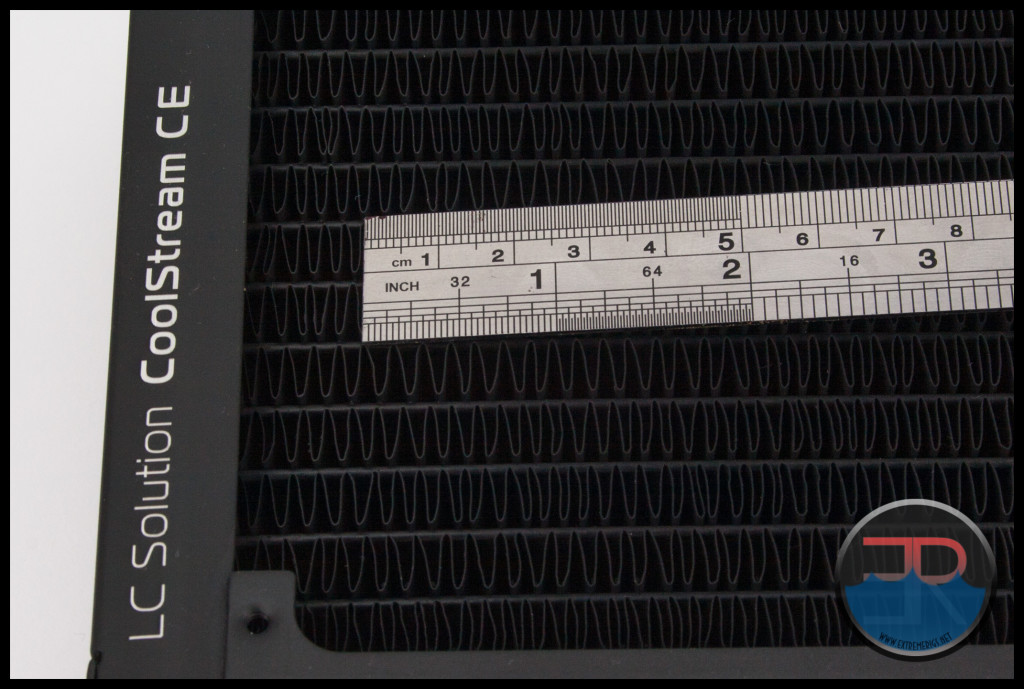
Previously I mentioned the fins being non louvered, this is true for all the fins except the outside row on each side which are louvered for some reason and have a much lower fin count.
Finish and Features
The CE 140 has a satin black finish which looks great and is smooth to touch. Close inspection shows the finish is actually quite bumpy. The black is not quite black either, but more of a deep charcoal grey. In any case the finish looks great but does tend to scuff up rather easily.
At the non-port end is the seemingly mandatory branding we find on almost all of our gear. At least it’s tastefully done, but we can’t help thinking that it will be upside down in most vertical installations, where having the ports at the top is usually preferred to assist in bleeding air from the system.
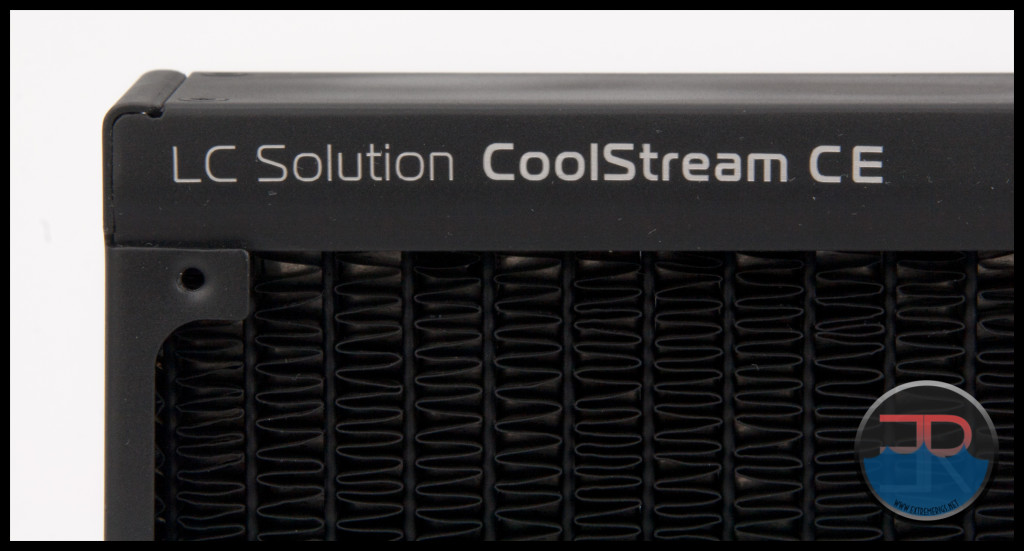
Screw protection plates are not fitted.
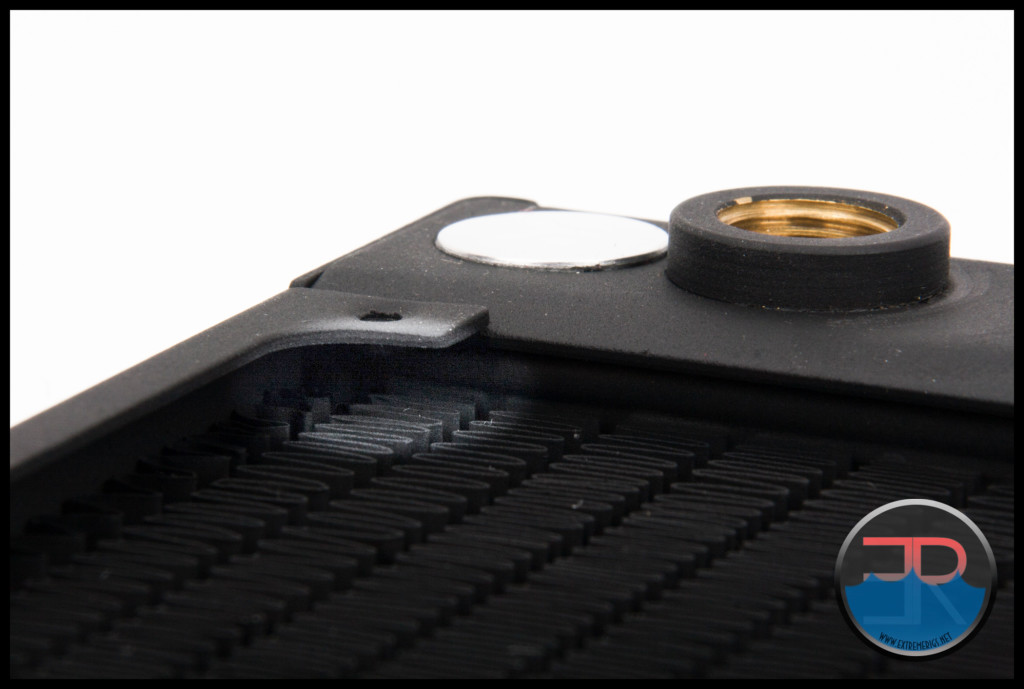 The mounting holes are not located directly above tubes, however they are close so it’s unusual that EK have chose not to incorporate screw protection plates.
The mounting holes are not located directly above tubes, however they are close so it’s unusual that EK have chose not to incorporate screw protection plates.
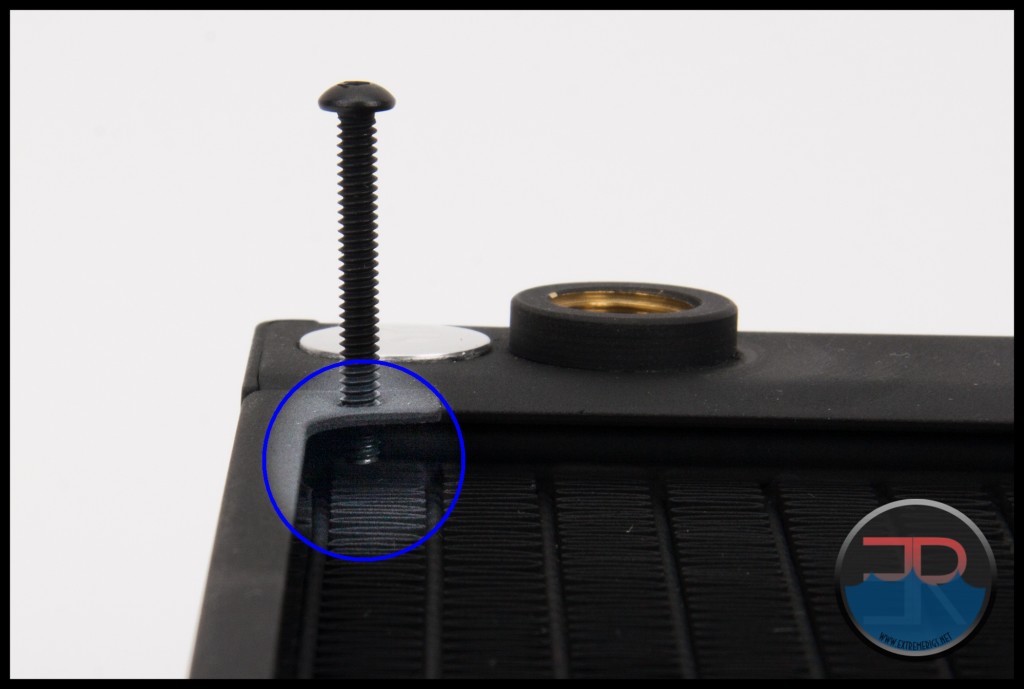
The CE 140 comes equipped with just 2 ports in total, either of which can be used for inlet or outlet.
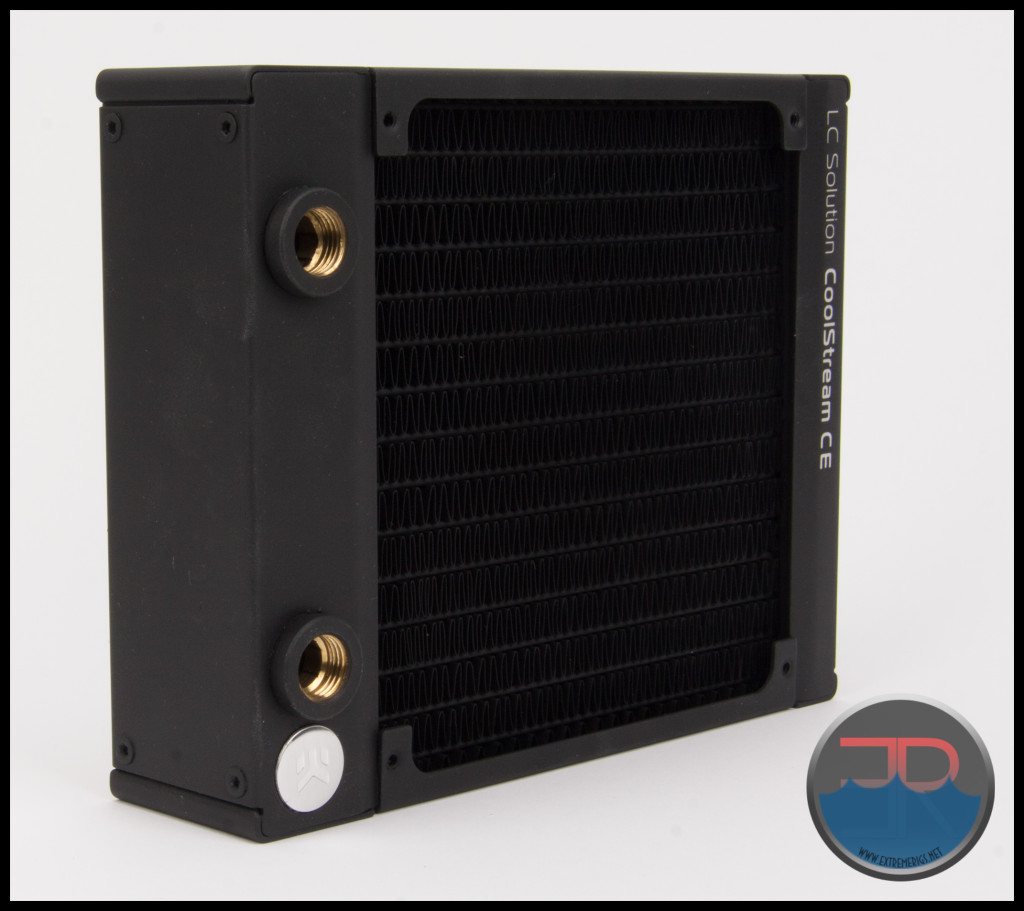 No alternative port options are fitted on the CE 140.
No alternative port options are fitted on the CE 140.
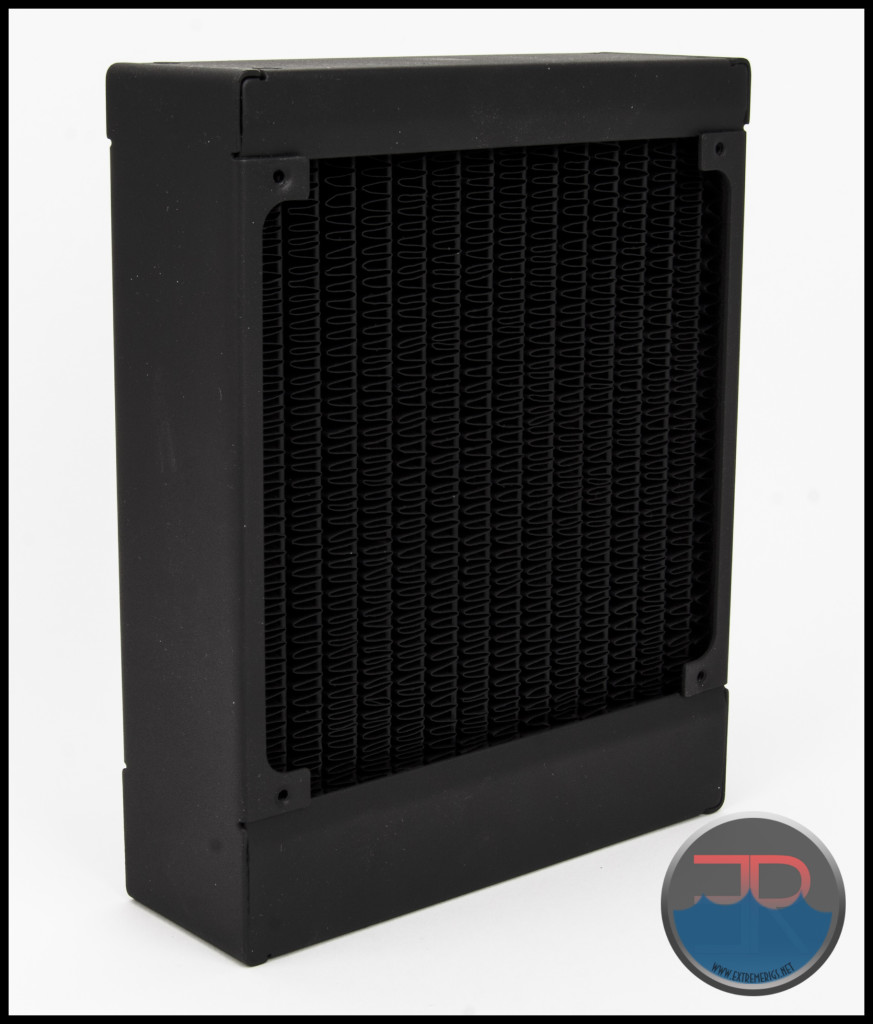 Unfortunately there is no dedicated fill/drain port on the return end either.
Unfortunately there is no dedicated fill/drain port on the return end either.
Technically the ports are extensions which screw into the tanks which are inside the external casing. The port extensions help keep the core from moving around inside the casing.
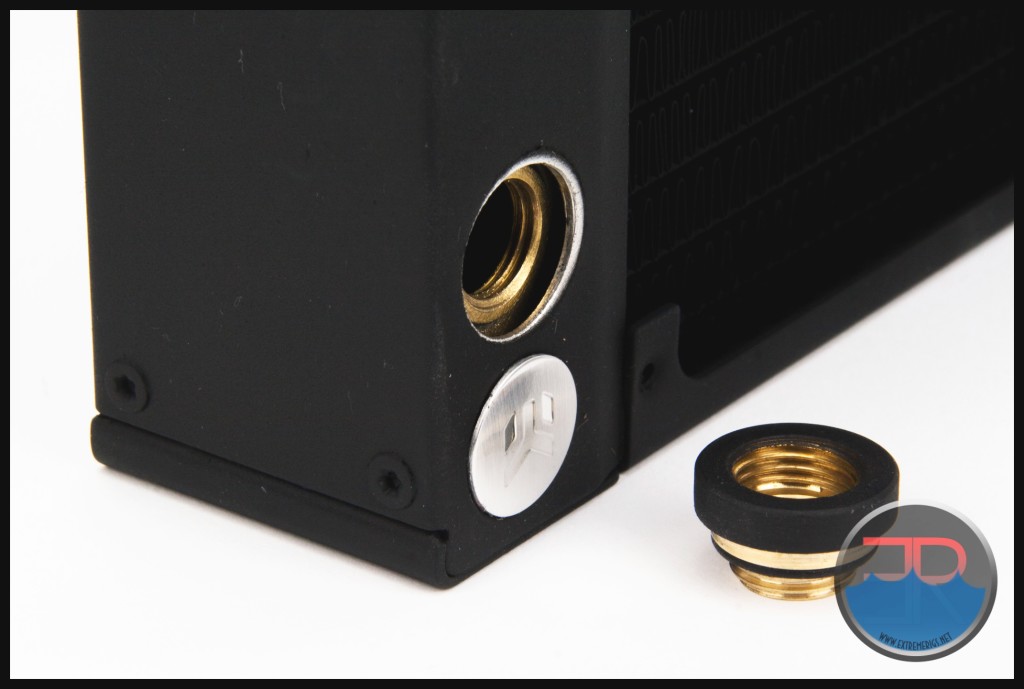 The extenders often unscrew when removing fittings, and it is the 9mm allen key (missing from the review sample) which is required to tighten them up.
The extenders often unscrew when removing fittings, and it is the 9mm allen key (missing from the review sample) which is required to tighten them up.
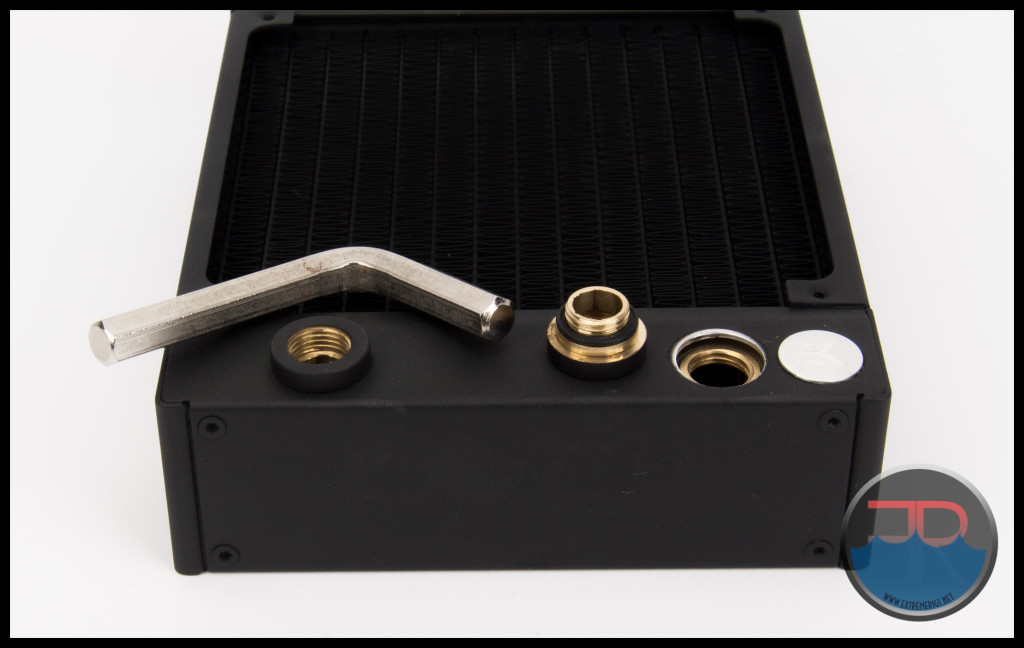 On various EK rads we have seen the finish of the port extenders differ. Some are untreated brass as our sample has, while others are nickel plated. With fittings in place only the painted section of the extender is visible, so whichever is supplied is not really of any concern.
On various EK rads we have seen the finish of the port extenders differ. Some are untreated brass as our sample has, while others are nickel plated. With fittings in place only the painted section of the extender is visible, so whichever is supplied is not really of any concern.
The CE 140’s square boxy design is quite stylish. Add your choice of fittings and it’s nearly ready for business.
With EK’s 140mm Vardar fans coming back on line last week, we have no doubt we’ll see many CE/Vardar combos popping up in builds very soon.
After testing was complete I dis-assembled the CE 140 for an inspection of the end tanks and was pleased to find nothing out of the ordinary.
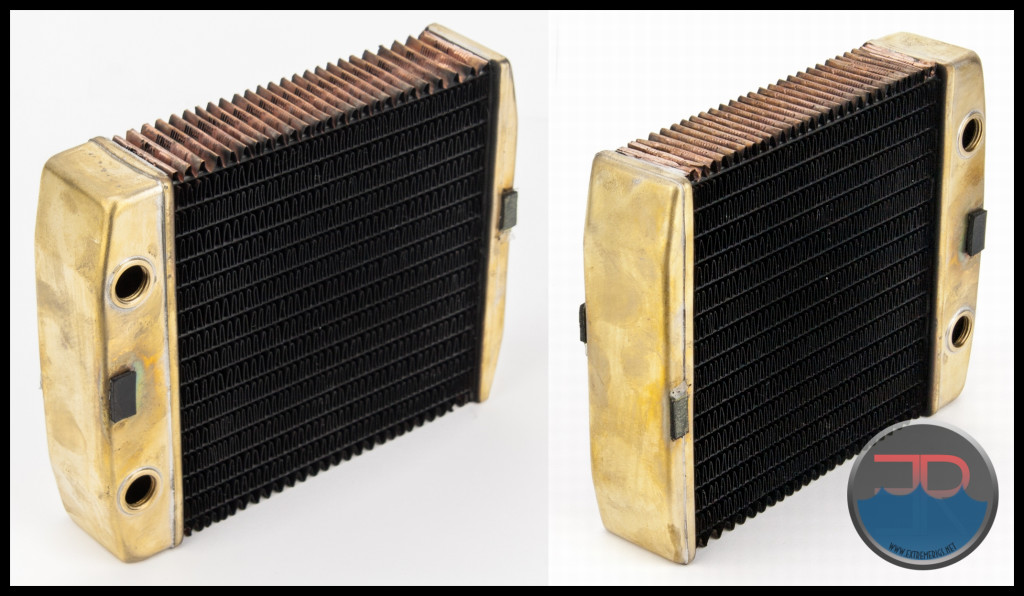
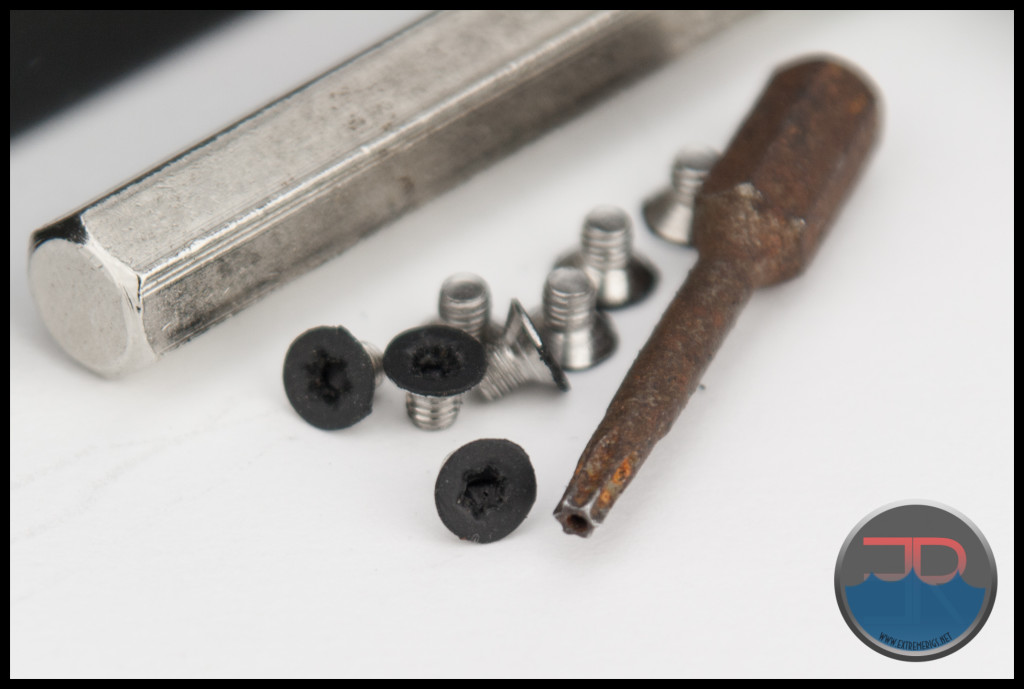 The relative ease at which the CE 140 comes apart makes it an ideal candidate for custom paintwork of the casing panels. A Torx driver (anti tamper) bit as pictured above will be required for dismantling and re-assembly.
The relative ease at which the CE 140 comes apart makes it an ideal candidate for custom paintwork of the casing panels. A Torx driver (anti tamper) bit as pictured above will be required for dismantling and re-assembly.
So here we have a 45mm thick radiator with a medium FPI count that has just 2 ports and no protection plates. The build quality and finish on the sample was excellent. It has a stylish look but it is lacking a few features.
Let’s see how it performs…








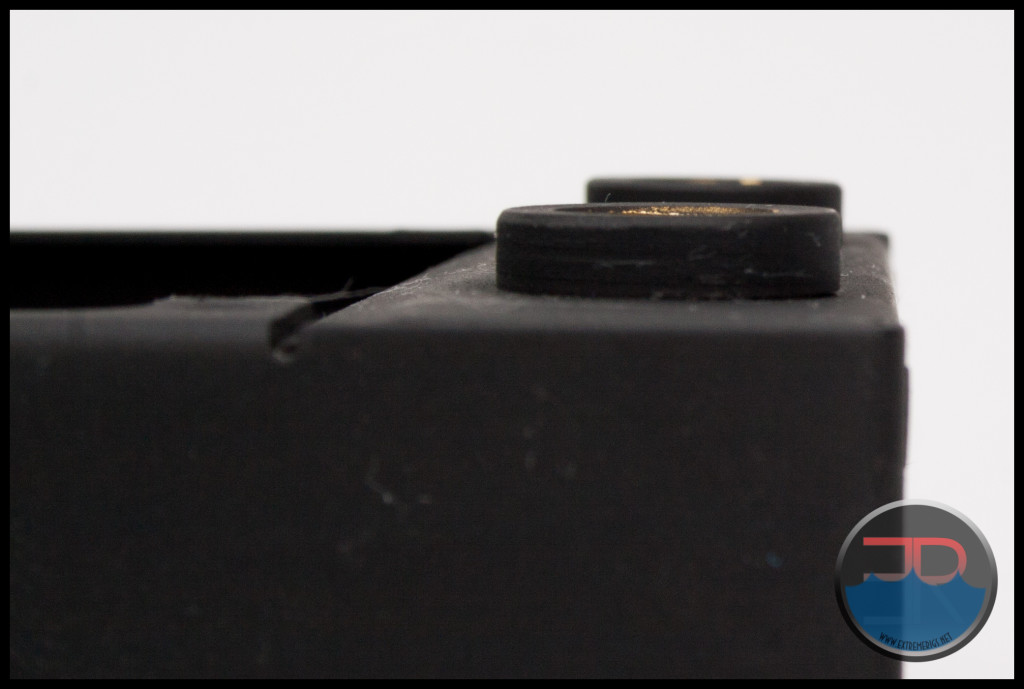

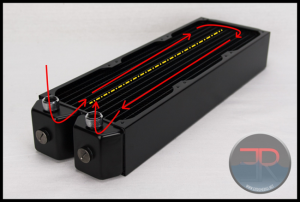
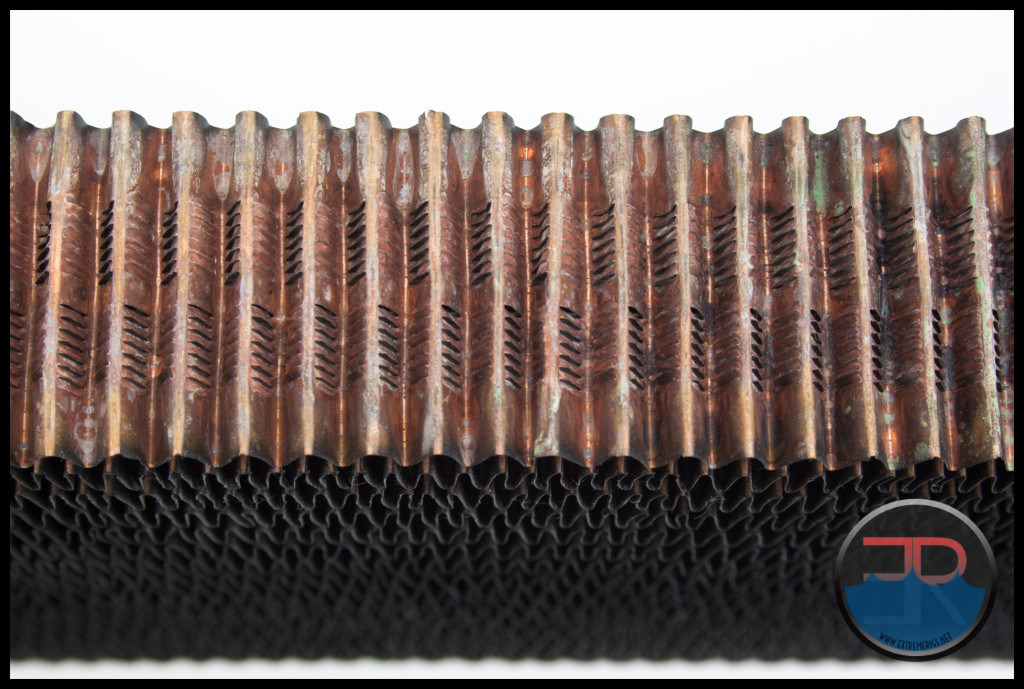
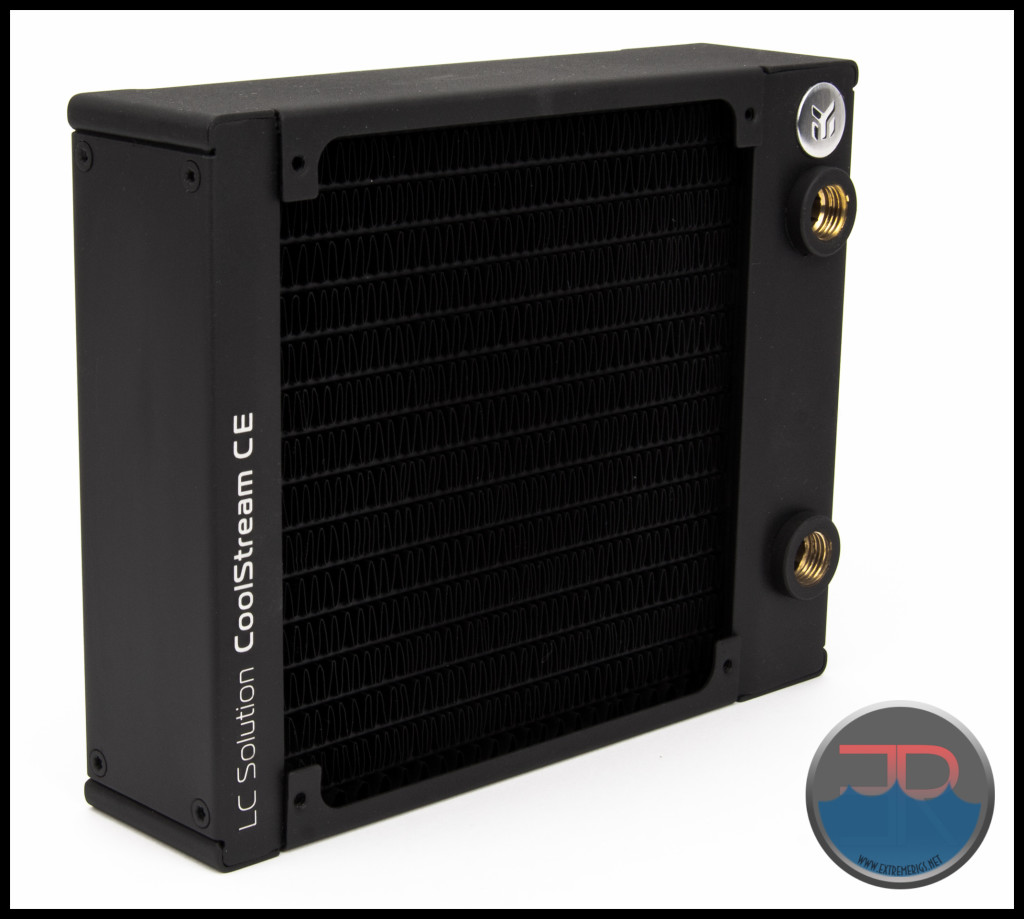
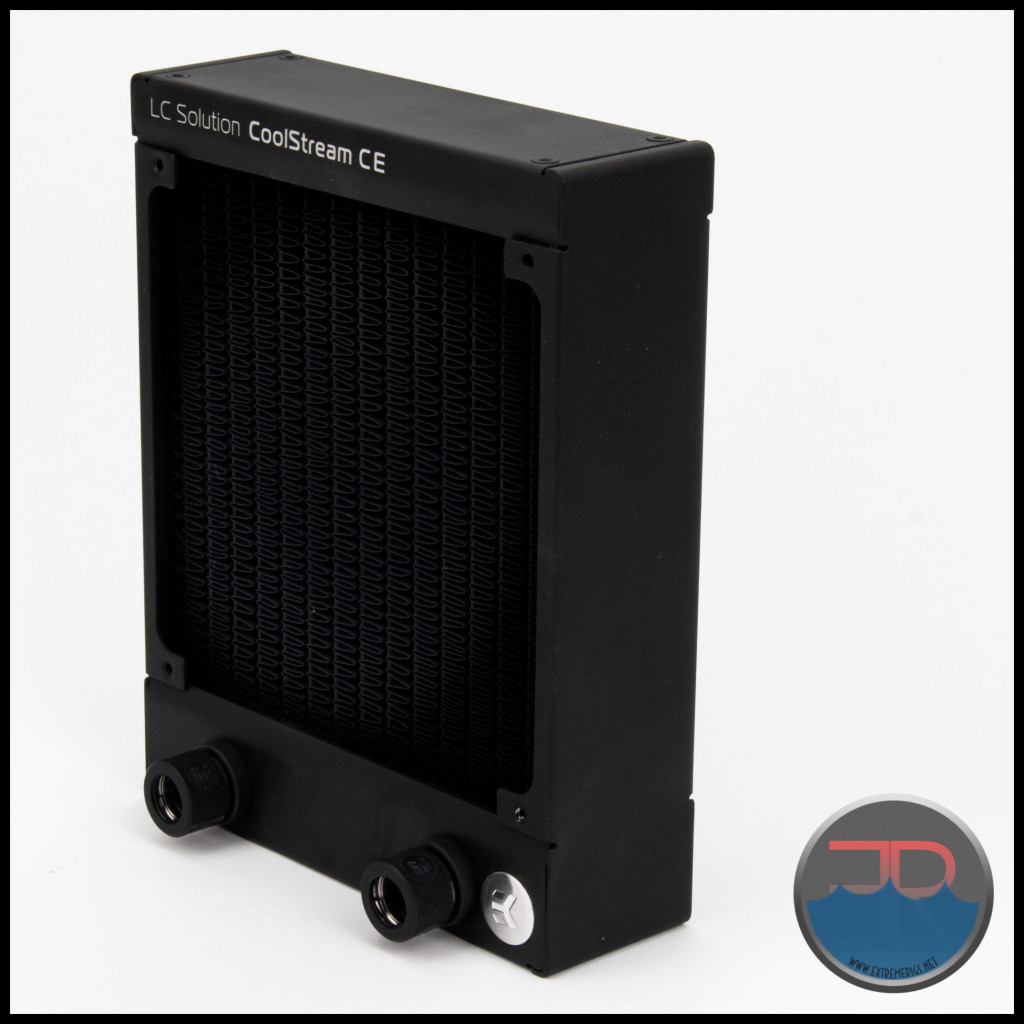
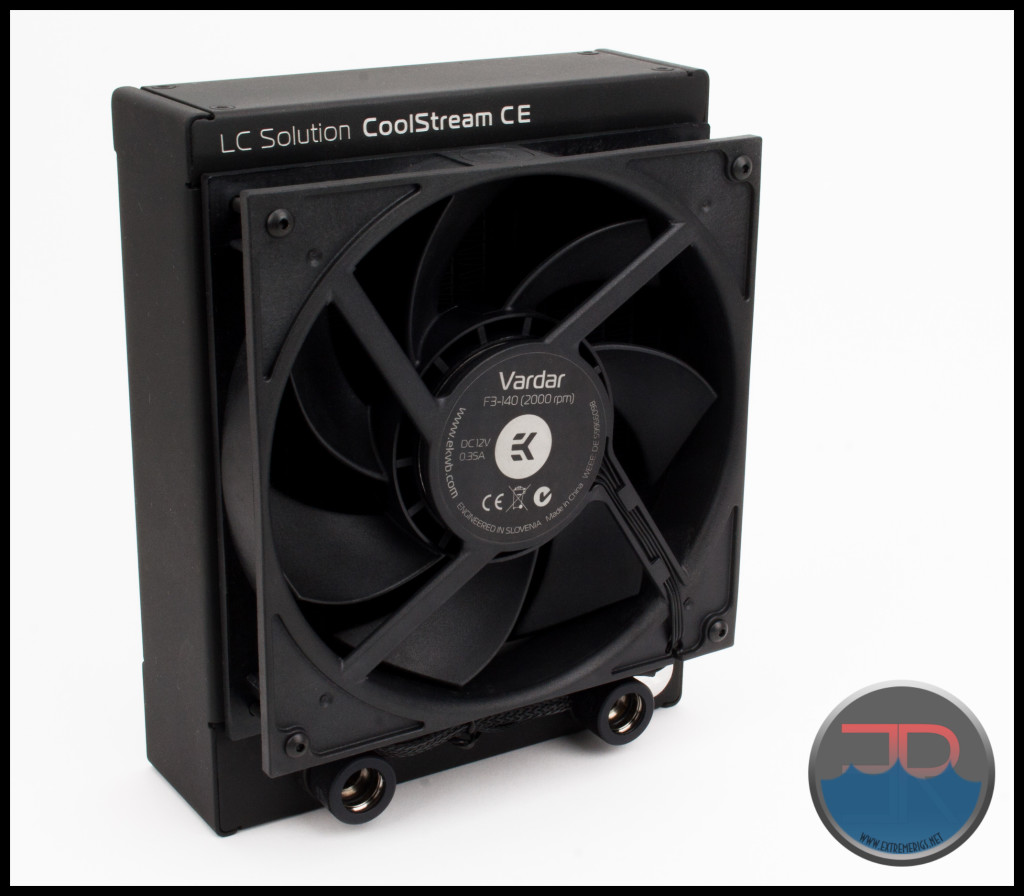
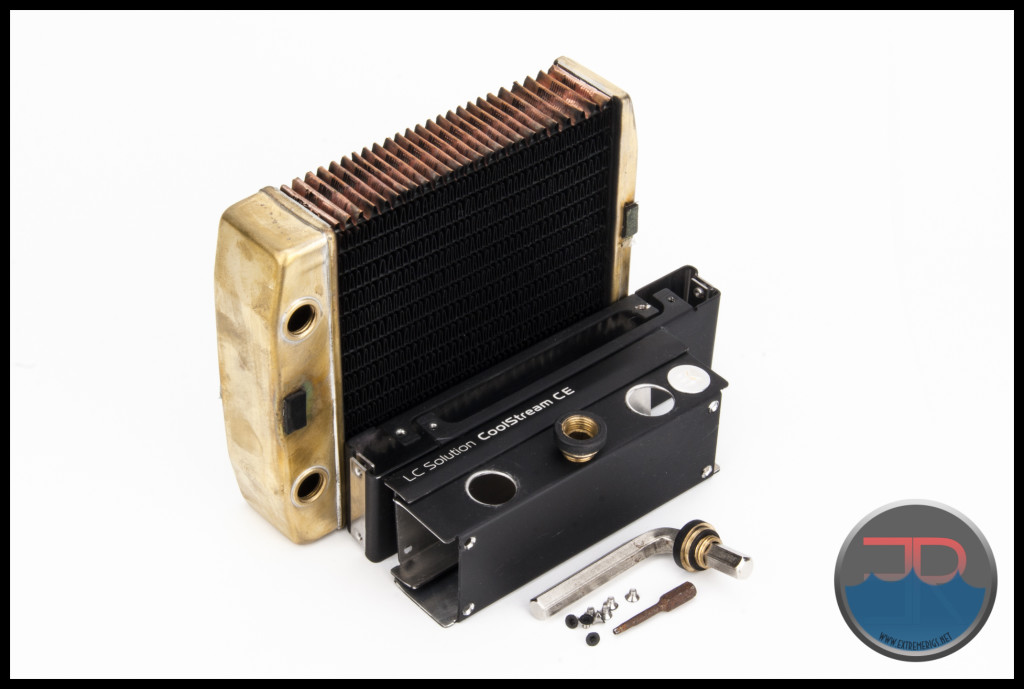



[…] EK CE 140 Radiator Hardware Labs Nemesis GTS 140 Radiator Hardware Labs Nemesis GTX 140 Radiator Hardware Labs SR2 140 Radiator Phobya G-Changer 140 Radiator […]
Comments are closed.